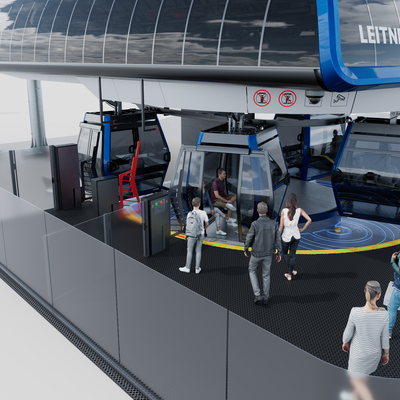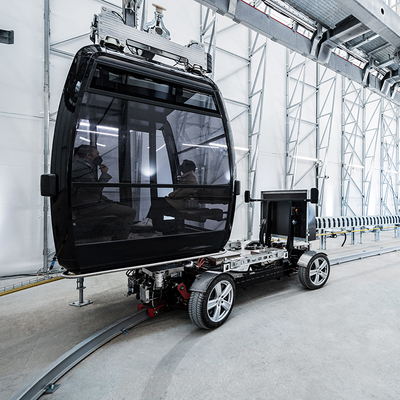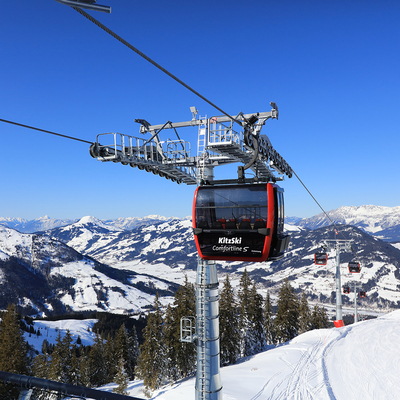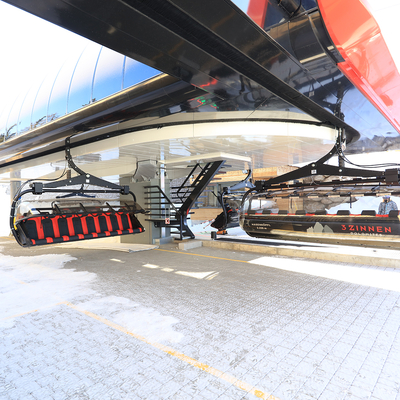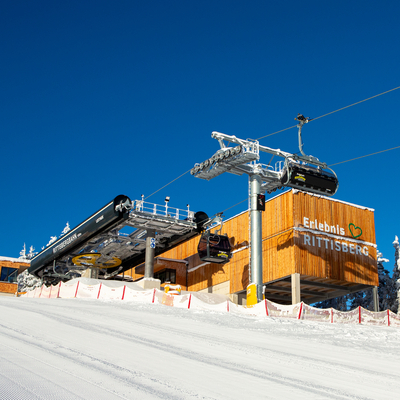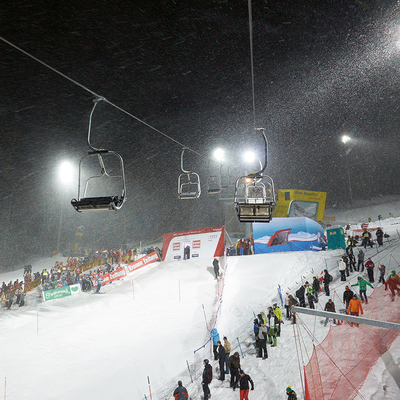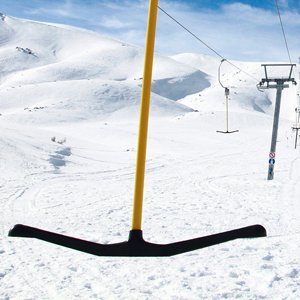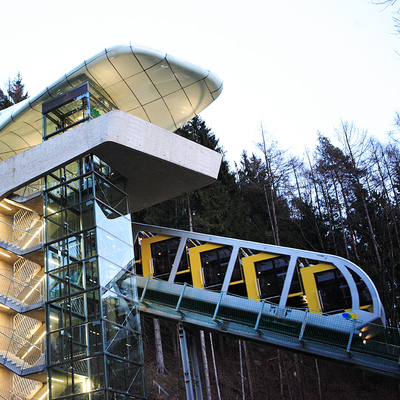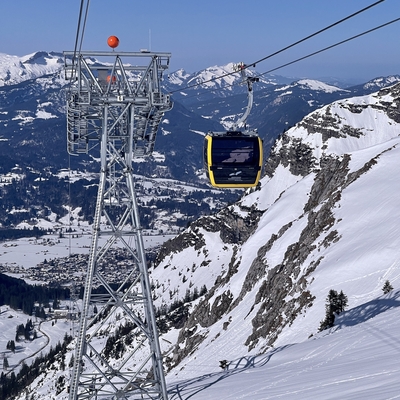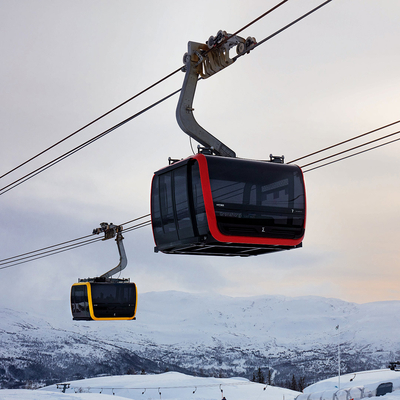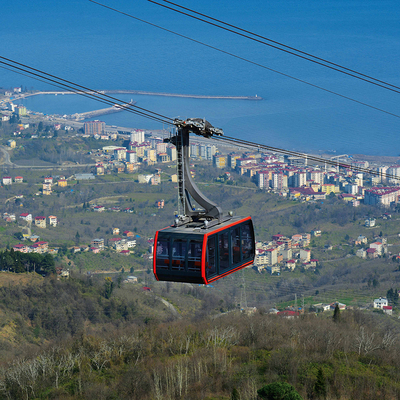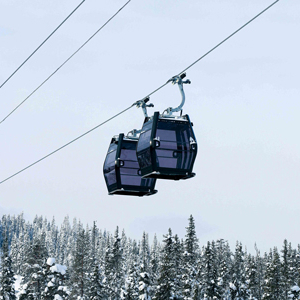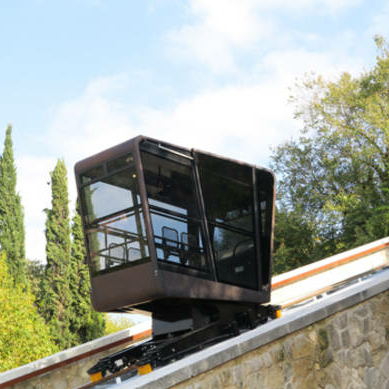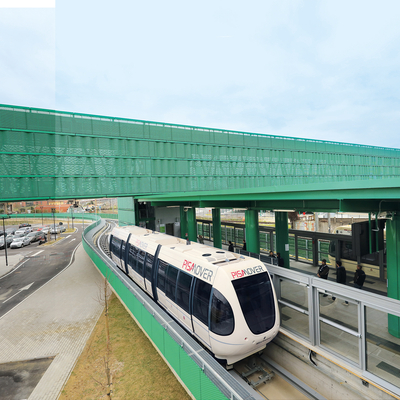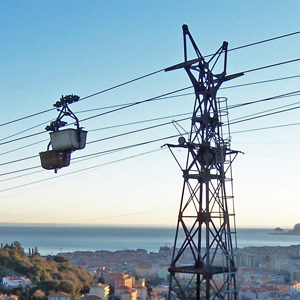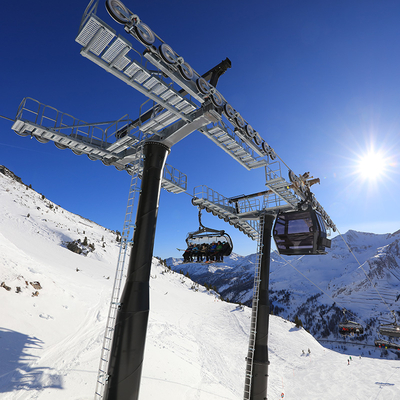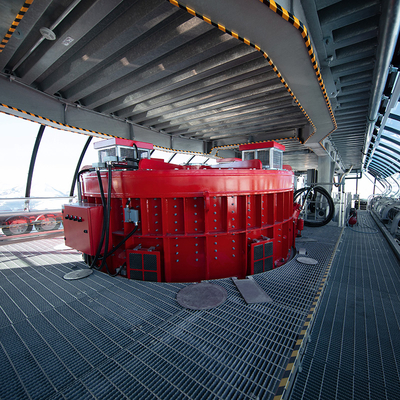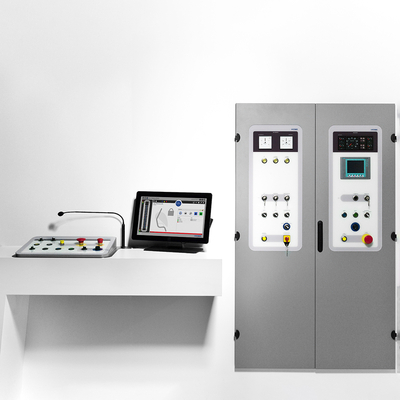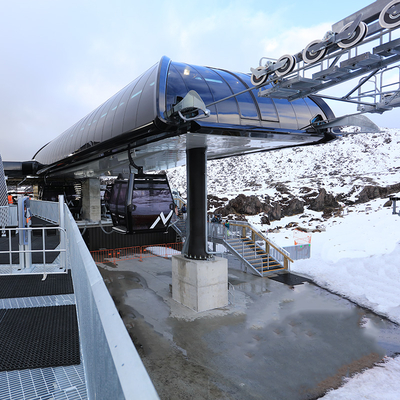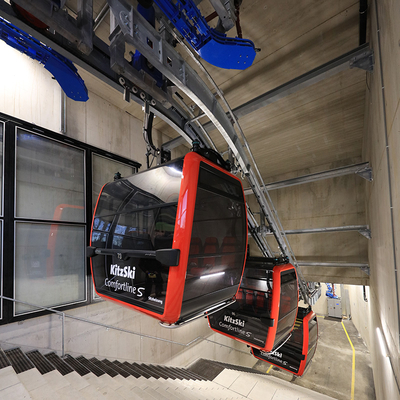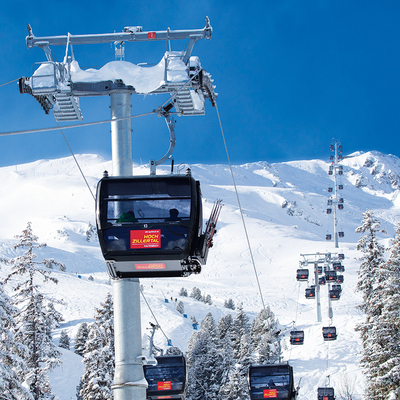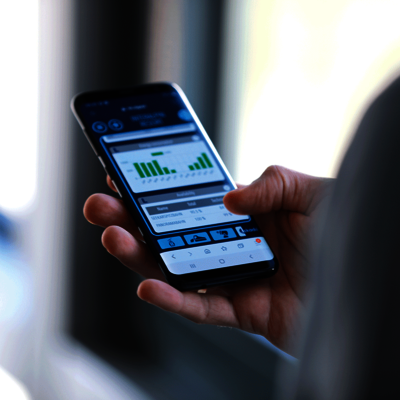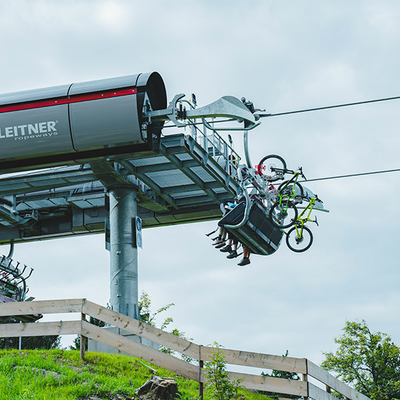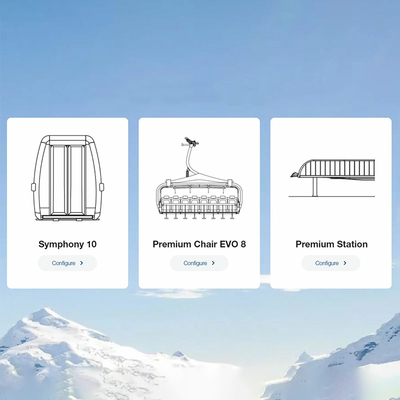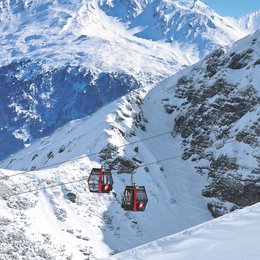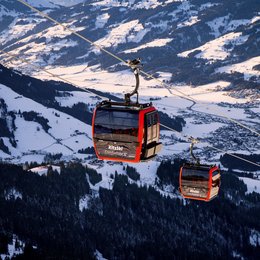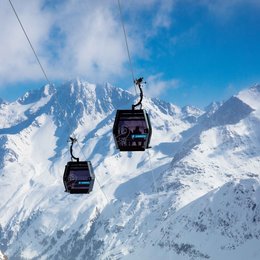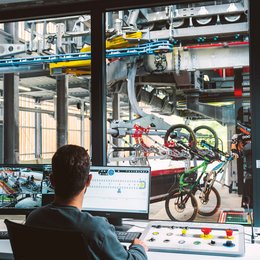The Dantercepies ropeway between Selva Gardena and the Gardena Pass is one of the region’s most popular lifts and an important element in the famous Sellaronda, which is one of the most impressive ski circuits in the entire Alpine region. A prestigious project completed by LEITNER in 2013, the ropeway has now been given a major technical upgrade almost ten years after its successful renovation. It consists of two 10-passenger gondola lifts and the focus was on upgrading it with a sophisticated drive system that achieves even more efficiency, sustainable operation and ease of maintenance. Despite a number of challenges, an ambitious schedule was met and the ropeway was opened on 10 June in time for the summer.
sustainable operation
The two independent 10-passenger gondola lifts GD10 Danter and GD10 Cepies are connected via an intermediate station and carry passengers over two sections to the Gardena Pass. The facility occupies a strategically important position and plays an all-rounder role in the region – and did so even before its rerouting in 2013. The multifunctional ropeway fulfils the highest standards for winter sports enthusiasts and summer guests. Mainly used by skiers and snowboarders in winter, it can carry bicycles and prams in summer.
LEITNER was appointed by operator Seggiovia Dantercepies SpA and has now set another technical milestone in the cable car’s development. The focus was on sustainably converting the two drives at the intermediate station. The planetary gearboxes belonging to the Danter and Cepies ropeways (LP300 and LP135 respectively), including their motors, were replaced by new LEITNER LD10 and LD5 DirectDrives.
This has a number of positive effects:
- from reducing noise
- to saving significant amounts of energy
- to reducing maintenance,
- additional increase in efficiency, especially in the areas of
noise emission and environmental protection, through LeitDrive frequency inverters
Noise reductions were scientifically tested and monitored by experts from the Università degli Studi di Perugia. As part of a comprehensive series of noise measurements, readings before the upgrade, with the planetary gearboxes in operation and under full load, were compared with readings with the newly installed LEITNER DirectDrives. As expected, a noise reduction of up to 15 decibels was achieved.
“Sound pressure levels were measured outside the station and inside the cabin where the intermediate station staff work, in order to check the acoustic quality before and after the drive was replaced. The result: installing the LEITNER DirectDrive eliminated the noisiest parts of the system. The new solution performs both mechanically and acoustically,” says Professor Federico Rossi of the Università degli Studi di Perugia.
LEITNER DirectDrive works
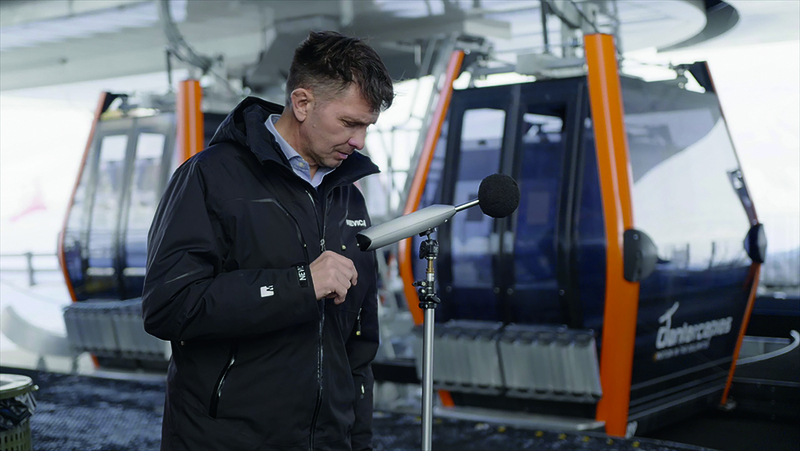
“We chose this direct drive because it remains the most advanced ropeway system. Because the Dantercepies cable car is used so heavily, we decided to take this technological step after just ten years and make a change that is about the future. This exciting technology gives us more operational reliability, especially given our passenger numbers. DirectDrive also makes our ropeway quieter, causes less wear and doesn’t need oil. As a supplier, LEITNER provides cutting edge service and technology – flexible, fast, capable and always in close contact with us as customers,” says managing director Giovanni Pasti (Seggiovia Dantercepies SpA).
Top functionality and successful project management
The specialists at LEITNER consider the conversion to bring a number of benefits, for both daily and long-term operation. “A conventional drive with a gearbox and fast-running motors suffers from gearing losses of five percent, and that’s eliminated entirely by the LEITNER DirectDrive. There is no more maintenance to be done on the gearbox and the problems surrounding the use of gear oil are also completely gone,” says Günter Tschinkel, Head of Electrical Engineering at LEITNER. A key feature of the overall concept is its redundancy and the fact that the LEITNER DirectDrive is extremely easy to repair. “Because the drive is designed in segments, if one segment fails, the system can continue to operate without interruption. As well as that, all kinds of repairs can be done on site with the drive still installed, without opening the station roof and using cranes to remove the motor. That virtually eliminates prolonged operational downtimes.”
Schedule adhered to despite a few hurdles
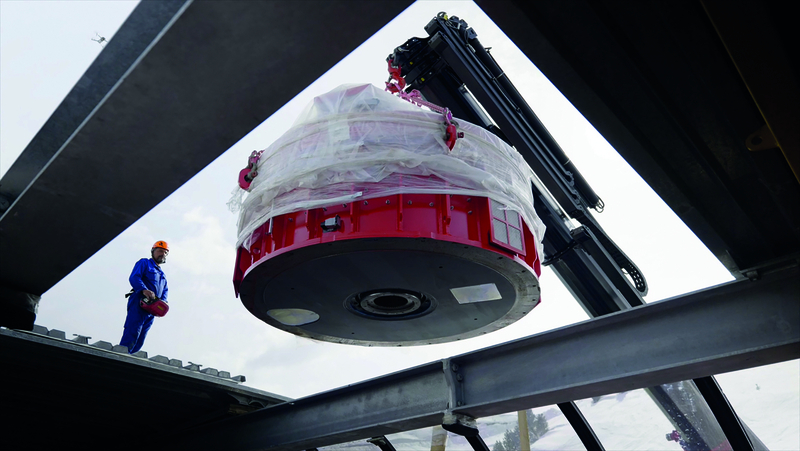
LEITNER project manager Markus Stampfer was delighted that they kept to the ambitious schedule and construction progressed even faster than planned. Conversion started after the winter season and the new facility resumed operation in plenty of time for Sellaronda Bike Day on 11 June. “There were a few hurdles to get over, for sure. As well as the time pressure, there were uncertainties around material procurement due to the current situation on the raw materials market, and the system was an unusual one too. Because the intermediate station can only be reached via the piste, the project was a first for us, and it required a great deal of logistical flexibility and responsiveness on the part of our team,” says Stampfer.
